新書推薦:
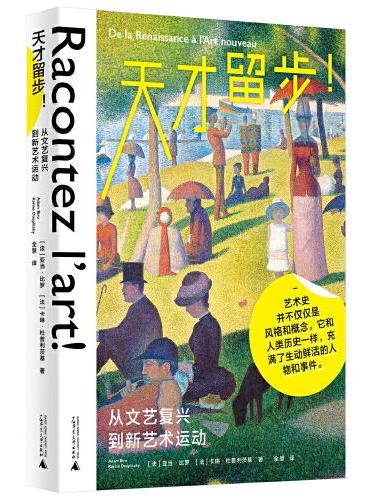
《
天才留步!——从文艺复兴到新艺术运动(一本关于艺术天才的鲜活故事集,聚焦艺术史的高光时刻!)
》
售價:HK$
158.7
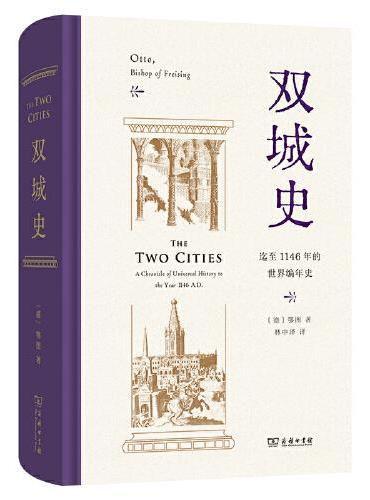
《
双城史
》
售價:HK$
110.9
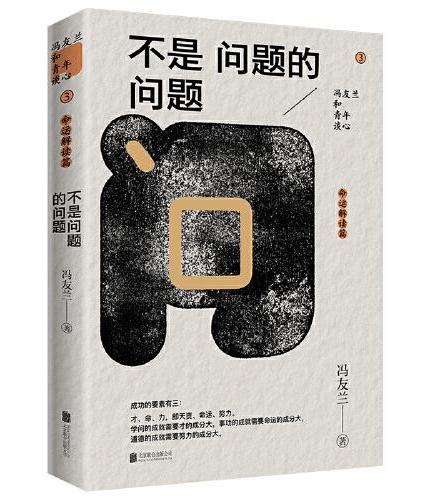
《
冯友兰和青年谈心系列:不是问题的问题(哲学大师冯友兰和年轻人谈心,命运解读)
》
售價:HK$
57.3
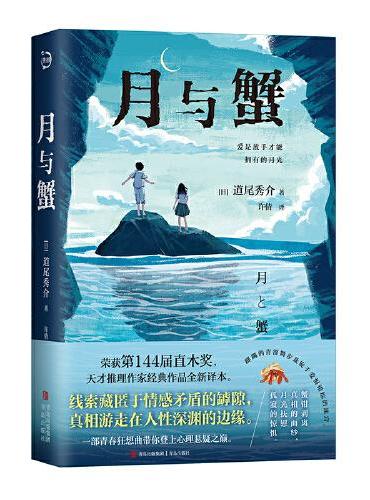
《
月与蟹(青鲤文库)荣获第144届直木奖,天才推理作家经典作品全新译本。一部青春狂想曲,带你登上心理悬疑之巅。
》
售價:HK$
51.8
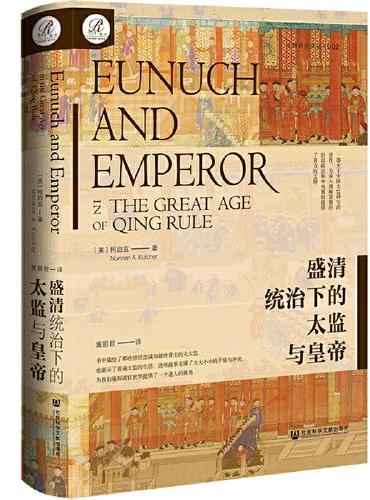
《
索恩丛书·盛清统治下的太监与皇帝
》
售價:HK$
88.5
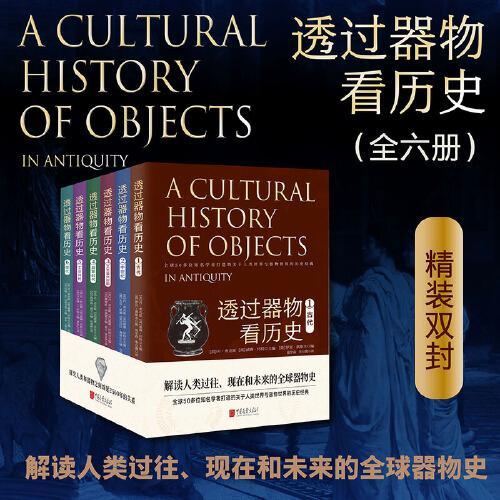
《
透过器物看历史(全6册)
》
售價:HK$
503.7
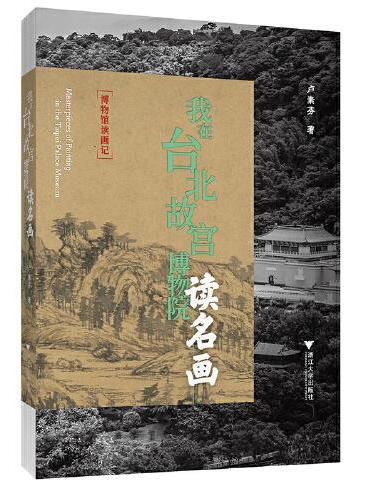
《
我在台北故宫博物院读名画
》
售價:HK$
112.7
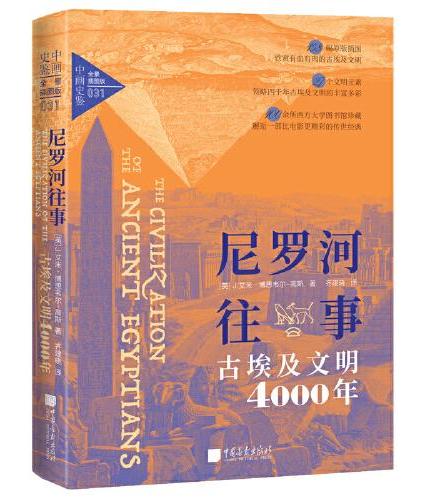
《
尼罗河往事:古埃及文明4000年
》
售價:HK$
78.2
|
| 內容簡介: |
|
全册共计分为地理、饮食、节假日、历史四个部分计19单元,每个单元结构如下:*部分主要是地理部分,讲述中国地理中的自然文化、风景以及美学意义,激发学生对祖国大好河山的自豪感以及如何讲好祖国山水的基本能力。第二部分主要是中国美食文化简介。通过具有中国特色的美食文化展示,凸显具有地方特色、民族特色的饮食文化,更好的讲述中国的悠久历史文化内涵。更好的向世人展示中国。民以食为天。第三部分主要是中国传统文化中的新年。中国传统文化中的新年对于整个世界的影响以及传达的民族文化内涵。进一步阐释5000年连续的文明背后的原因。第四部分是中国历史文化部分,讲好中国的故事是关键,中国的故事中的历史文化秉承整个民族文化,是民族文化的脊梁。从寻根问祖、丝绸之路、大唐盛世、两宋文化科技、大明王朝航海时代、以及大清帝国、新中国的成立,一步步走向辉煌的历史,客观、真实的诠释了整个民族的历史文化,在兴衰的进程中见证了辉煌的过去以及展望民族复兴的未来。在教材编写过程中,我们得到了许多同仁的大力支持以及建议,再次表示感谢。由于编写组成员知识水平有限以及对材料的理解度和感知力不同,因此存在的问题以及错误在所难免,希望读者予以指正。
|
| 目錄:
|
(Contents)
Part IGeography
Chapter OneHeart of the Dragon
1.1The last hidden worldChina
1.2Rice and swallow in the warm subtropical south of China
1.3The Karst and the caves
1.4The endangering wildlife of the South and the protection
1.5A review of the South of China
Chapter TwoShangrila
2.1Introduction
2.2The different ethnic groups and the dwelling animals
2.2.1The Dai people and the Water Splashing Festival
2.2.2The Lisu people and the Yunnan snubnosed monkey
2.2.3The Chinese red panda
2.2.4Abundant plants and the Plant Hunters
2.2.5Various animals and the bamboo
Chapter ThreeTibet
3.1Introduction of Tibet
3.2Tibetan religion
3.3Various wild creatures
3.3.1The hot spring snake
3.3.2The jumping spider
3.3.3Chiru
3.3.4Yak
3.3.5Yatsa gunbu
3.3.6The spiritual culture and conservation
3.3.7The blacknecked crane
3.3.8The pika
3.3.9Threats to the wild animals
3.4Tibets most secret corner
3.4.1The Yarlung gorge
3.4.2Mount Kailash
3.4.3Tibets glaciers
Chapter FourBeyond the Great Wall
4.1Introduction of the Great Wall
4.2The Northeast China
4.2.1The Black Dragon River and the Hezhe people
4.2.2Wild animals in the south of the Black Dragon River
4.2.3Changbaishan
4.3The Mongolian Steppe
4.3.1The grasslands
4.3.2The Mongolian and horses
4.3.3Bayanbulak
4.3.4Swans
4.3.5Gazelles
4.3.6Jiayuguan
4.4The Taklimakan
4.4.1The silk and the Silk Road
4.4.2Sea of Death
4.4.3Turpan oasis
4.4.4Kashgar
4.5Tian Shan
4.5.1Kazakhs
4.6The Junggar Basin
4.6.1Hamsters
4.6.2Wild horses
4.6.3Golden eagle and hunters
4.7Harbin
Chapter FiveLand of the Panda
5.1Introduction
5.2Exploration journey
5.2.1Ideas about relations between man and nature in Beijing
5.2.2Influence of the Loess Plateau and the Yellow river on
Chinese people
5.2.3Relations between man and wild animals in Qinling
Mountains
5.2.4The relationship between the Chinese people and their
environment
5.3Hope for human living in harmony with nature in China
Chapter SixTides of Change
6.1Introduction
6.2Journey of cranes from north of China to the south
6.2.1The redcrowned cranes in northern Chinas Haling Nature
Reserve
6.2.2Friendship between swans and human in Mount Jinping
6.2.3Snakes and birds in Shedao Island
6.2.4Fishing and jellyfish in Chuwang Harbour
6.2.5Milu in Jiangsu Province
6.2.6Birds in Yancheng
6.2.7Living creatures in the Yangtze River
6.2.8From hunters to conservationist in Chongming Island
6.2.9Bigger invasion to birds and river life in Shanghai
6.2.10Tea planting in Tami Mountains
6.2.11Migrating birds in Hongkong harbour
6.2.12Chinese white dolphins in Landau Island
6.2.13Carol and carol reefs in the South China Sea
6.2.14The wild macaques in the Dongzhaigang Mangrove
Reserve
6.3The path chosen for Chinese economic development and
environmental protection
Part IIChinaA Culinary Adventure
Chapter SevenBeijing
7.1Introduction of the journey
7.2City dishes
7.2.1Noodle
7.2.2Stirfry of aubergines with mild green chillies
7.2.3Zha Jiang Mian
7.3Wangfujing Night Market
7.4Jingshan Park and Kens growing up memory
7.5Hutongs Peking Duck
7.6Local breakfastBaozi with Intestine Soup
7.7Dumpling
7.7.1Making dumplings
7.7.2Cooking dumplings
7.8Chings growing up memory
7.9Countryside meals
7.9.1Stirfry of pork and wild mushrooms
7.9.2Spring onion flatbread
7.9.3Corn porridge
7.10Kens Meeting Hongying
7.10.1Roasted and fried Chicken wing and Stirfried cabbage
7.11Meeting Chef Dadong
7.11.1Sweet and sour duck balls
7.11.2Twice cooked crispy duck and apple salad
7.11.3Duck minced up with lettuce cups
Chapter EightChengdu
8.1Chengdus spice market
8.2Fly restaurant Ming Ting
8.2.1Ma Po Dofu
8.3Visiting Jennys grandparents house
8.3.1Pickles making
8.3.2Stirfried rabbit meat
8.3.3Boiled fish dish
8.3.4Stirfried crispy fragrant Sichuan sausage
8.4Street food
8.4.1Baozi bun
8.5Fondue
8.6Visiting pig farmersMr. and Mrs.Peng
8.6.1Pigs ear salad
8.6.2Twicecooked pork
8.7Visiting factory of Pixian bean paste
8.8People Park
8.9Meeting Chef LiCantonese Executive Chef
8.9.1Crispy Aromatic Duck
8.10Panda
8.11Chef Yu Bo food art
8.11.1Guaiwei cucumber
Chapter NineYunnan
9.1Yunnan cuisine
9.1.1Dai Minority cuisine
9.1.2Bulang minority cuisine
9.1.3Stir fried ricenoodles with broad beans and bamboo
shoots
9.2Kashgar in Xinjiang Uyghurs Autonomous Region
9.2.1Naan Bread
9.2.2Roasted lamb
9.2.3Uyghur dish polo
9.2.4Laghman
9.2.5Chuchura
Chapter TenGuangdong
10.1Cantonese cuisine
10.1.1Huangsha market
10.1.2Steamed Cantonese scallops
10.1.3Stirfried razor clams
10.1.4Dim sum
10.1.5Yum cha
10.1.6Bao Hua road market
10.1.7Sweet and sour pork
10.1.8Black chicken soup
10.1.9Cantonese opera
10.2Chings Homecoming to Taiwan
10.2.1Zongzi
10.2.2Drunken prawns
10.2.3Stirfried fresh clams
10.3Kens homecoming to Kaiping City
10.3.1Sweet and sour goose
10.3.2Bitter melon with black bean sauce
10.4Meeting at Hong Kong
Part IIITraditional Festival
Chapter ElevenReturning Home
11.1Mass migration
11.2Harbin
11.3Ice festival
11.4Light display
Chapter TwelveReunion
12.1Coming home
12.2Beijing
12.3Celebration
12.4Bell
Chapter ThirteenFestivity
13.1Getting together
13.2Hong Kong
13.3Fish market
13.4Dragon dance
13.5Temple fair
13.6Night parade and fireworks
Part IVHistory
Chapter FourteenAncestors
14.1The Qingming Festival
14.2The plain of the Yellow River
14.3The legend of King Yu
14.4The Shang Dynasty
14.5The Mound of Shang
14.6Taoism
14.7The first golden age of Chinese philosophy
14.8The First EmperorQin Shihuang
Chapter FifteenTang Dynasty
15.1The Silk Road
15.2The Buddha
15.3Christianity
15.4The Crisis
Chapter SixteenSong Dynasty
16.1Introduction
16.2The Golden Age
16.2.1Kaifeng
16.2.2The Festival of the River Kaifeng
16.2.3Cuisine
16.2.4Printing
16.2.5Civic values
16.2.6Su Song
16.2.7Religion
16.2.8Kickball
16.2.9Education
16.2.10Li Qingzhao
16.2.11Wang Anshi
16.3Paradise lost
16.4New paradise built
16.4.1Hangzhou
16.4.2Zhu Xi
16.5End of the Song Dynasty
Chapter SeventeenMing Dynasty
17.1Nanjing
17.2Desire for control
17.3The Great Ming Code
17.4Yongle Emperor
17.5New capital
17.6Trade and voyage
17.7The renovation of the Great Wall
17.8Lacquer making
17.9Cotton and silk industry
17.10Gardens in Suzhou
17.11Tourism
17.12Matteo Ricci
17.13Adoption of Solar calendar
17.14Seclusion from the world
17.15Crisis
17.16End of Ming Dynasty
Chapter EighteenQing Dynasty
18.1The end of Ming Dynasty and the birth of Qing Dynasty
18.2The rule under Kangxi
18.3Qings policy towards the ethnic minorities and its civilization
18.4Ruling in the Chinese tradition and stressing agriculture
18.5Kangxis stress on culture and the Bondsman Cao Yin
18.6Yangzhous rise with Manchu patronage
18.7The salt merchant and philanthropistBao Zhidao
18.8The opera and drama supported by rich people
18.9A flourishing culture and popular fiction
18.10Old Kangxis advice to his son
18.11Yongzhengs trials of Cao Yin and Cao Xueqins The Red
Mansion
18.12The rise of the British and the possible in fluence on the course
of Chinese history
18.13Opium to China and China was at risk
18.14Qianlongs refusal to do business with Britain became a reason
of the Opium War
18.15Lin Zexus destruction of the British opium
18.16The first Opium War and China lost Hong Kong
Chapter NineteenThe Age of Revolution
19.1The Taiping Revolution
19.1.1Religious and political Background
19.1.2Hongs revolutionary and religious ideas
19.1.3The spread of the Taiping Ideology
19.1.4The Taiping State
19.1.5The end of Taiping
19.2The boxer rising
19.2.1The rise of political forces after the Second Opium War
19.2.2The boxer rebellion
19.2.3The inevitable revolution recorded in Liu Dapengs
dairy
19.2.4The end of feudal dynasties
19.3The May 4th Movement
19.3.1Student demonstration and the voice from Lu Xun
19.3.2The founding of Chinese Communist Party
19.4The birth of the Peoples Republic of China
19.4.1Westernization in cities
19.4.2The War between the Nationalist Government and the
Communists
19.4.3The united front between Nationalists and Communists
towards Japanese
19.4.4The founding of the Peoples Republic of China after the
Civil War
19.4.5Maoism
19.4.6Dengs Opening up and China today
参考文献References
|
| 內容試閱:
|
序
汤因比(18891975,为英国史学泰斗)。他说,21世纪将是中国文化的时代,中国文化将是21世纪人类走向全球一体化、文化多元化的凝聚力和融合器。
听起来,我们确实有些高兴,高兴之余,也有点不安。我们该怎么办? 在这片土地上,在整个中华民族里,我们的文化能够塑造5000年的灿烂民族文明;但在全球化的今天,我们的民族文化又能否承受兼济天下之重呢。
21世纪伊始,中国文化热浪正在全球传播。无论是近期中央电视台黄金时间连续播出的《大国外交》《辉煌中国》,还是英国BBC公司倾力打造的《中国的故事》《美丽中国》《中国新年》《野性中国》《舌尖上的中国》等一部部作品,无不讲述着中国的故事,无不传递着中国的声音。在街头小巷、饭馆茶肆,我们倾听着老人们讲述着以往故事,注视着老人们满眼里的泪水,感受着这些话语里的自豪。看着老人们坐在电视机前,一遍遍聆听着中国当代的故事。人们的目光跟着习主席的步伐,来到农家,在炕头上盘腿而坐,倾听农民的心声;或进厂矿,和工人兄弟们促膝而谈。我们感受到了那种情怀、那种自信、那种自豪、那种责任意识。
外交的自信、经济发展的自信,源于文化的自信、源于道路的自信,源于整个民族5000年不间断文明的自信。
进入全球化时代,中国文化正从各个方面受到重视。伴随着中国文化的对外传播,高校外语教育工作者该如何更好地发挥自身的作用呢?
作为高校外语工作者,在高校外语教学过程中,笔者深切地感到民族文化自信在对外文化交流中意义深远。外语工作者在传播西方文化的同时,更应该首先关注民族文化,积极传播民族文化,讲好中国的故事。
尤其是在培养自身的自信及莘莘学子的民族文化自信的时候,以及在对外传播意识的时候。为了培养这种文化自信意识,笔者选择了英国BBC广播公司以精准英语、精心制作的中国文化系列教学材料,精心编辑成书,以满足大学师生和文化爱好者的渴求,为全球一体化、文化多元化,贡献微薄之力。
笔者水平有限,错误难免,希望读者不吝指正。
编者2018年2月于北京
前言
根据高等院校英语专业中国文化教学大纲要求,笔者编写了《(中国文化之旅)The Passage to Chinese Culture》专业教材,供高校英语专业及其他专业英语师生能与民族文化相互结合和学习使用。在加强大学生英语基础教学的同时,大学英语教学的重点应该是侧重中国文化的阅读与传播。通过对民族文化的社会、文化、政治、经济、文学、历史、宗教、风土人情等,风格各异的各类材料文章,来积累丰富民族文化知识,并为加强民族文化自信而学习。
根据多年的英语教学经验,以及在对外文化交流中遇到的问题,有众多英语专业师生难以正确表述的民族文化术语、内涵,以及难以讲好听好懂的中国故事等尴尬现象。笔者编写的这部教材,旨在提升学生英语水平的同时,更好地理解和讲述民族文化,规范对外文化交流中民族文化术语及内涵,进而加强民族文化自信。为此,笔者选编了以BBC纪录片为核心的,包括地理、历史、饮食、节假日为主的多个方面材料。在编写过程中,秉承了讲述中国历史文化的同时,传播正能量,剔除材料中个别对于中国历史文化中误解偏见以及负面观点。
全册共分为地理、饮食、节假日、历史四部分,计19单元,每个单元结构如下所述。
第一部分,主要是地理部分。讲述中国地理,涉及自然文化、风景以及美学意义,激发学生对祖国大好河山的自豪感和讲好祖国美丽山水的基本能力。
第二部分主要是中国美食文化简介。通过对中国特色美食文化展示,凸显具有地方特色、民族特色的饮食文化,更好地讲述中国悠久历史文化内涵。更好地向世人展示中国人的民以食为天理念。
第三部分主要是中国传统文化中的过新年。中国传统文化中的过新年对整个世界的影响,以及所传达的民族文化内涵。由此进一步阐释5000年连续文明的背景及内涵。
第四部分是中国历史文化部分。讲好中国的故事是关键。中国故事反映了历史文化,秉承了整个民族文化,也是民族文化的脊梁。简要阐述了寻根问祖、丝绸之路、大唐盛世、两宋文化科技、大明王朝航海时代,以及大清帝国、新中国成立前后,一步步走向辉煌的历史。客观、真实地诠释了中华民族历史文化,在兴旺发达的进程中见证辉煌的过去及展望民族复兴的未来。
在教材编写过程中,笔者得到许多同人的大力支持及建议,在此表示深切感谢。由于编写组成员的知识水平有限,对材料的理解度和感知力不同,书中存在的问题及差错在所难免,希望读者予以指正。
罗学锋2018年2月
|
|









